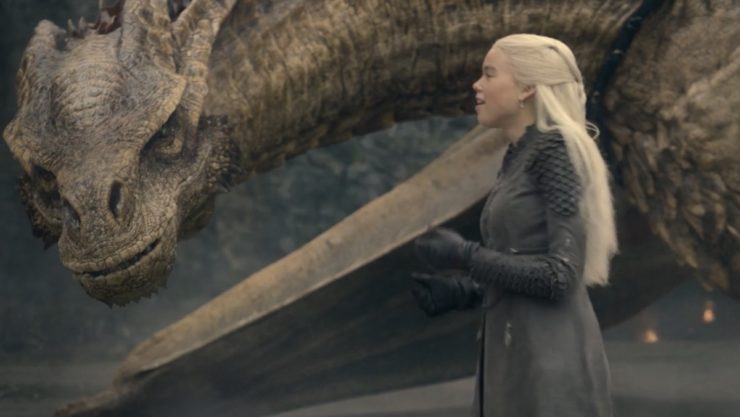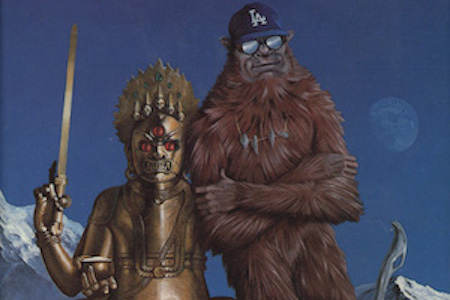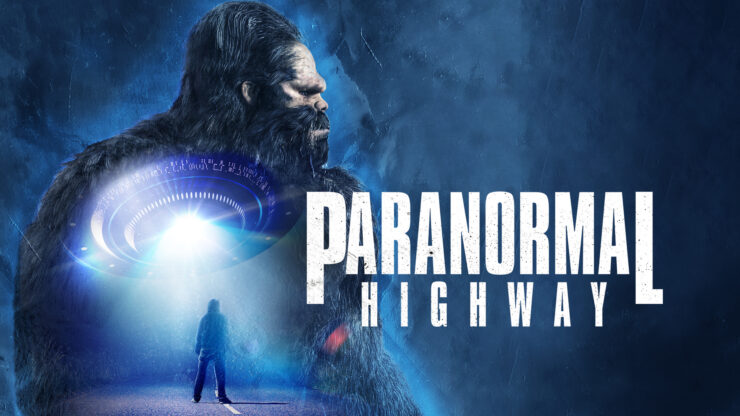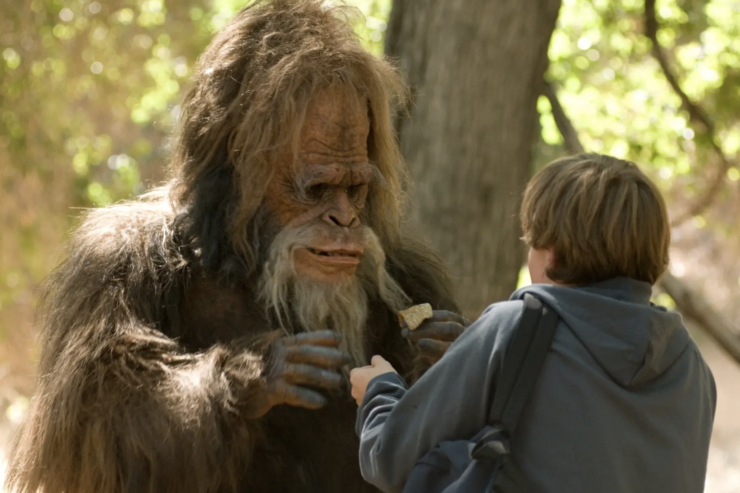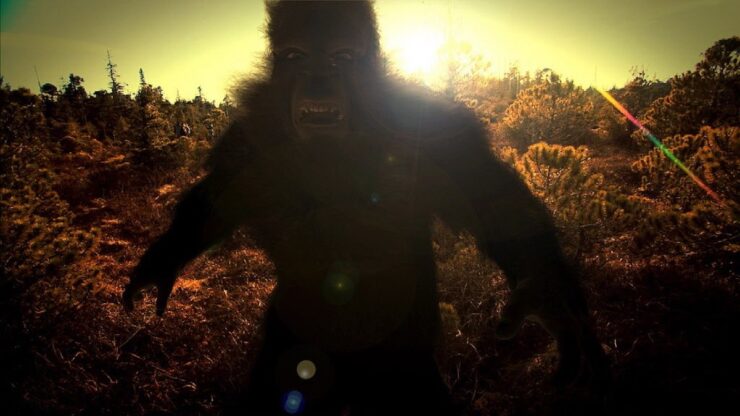I know I should wait till Season 1 of House of the Dragon ends, but I have Plans for the next few articles, and it’s time to move on from dragons. If anything huge happens in the final couple of episodes, I can always come back.
One important disclaimer: I am writing about the televised version of the George R.R. Martin books. I have read the first three volumes of A Song of Ice and Fire. I have not read Fire & Blood, which is the source for the prequel series. If you have read them, please do comment, I’d love that, but remember that I am writing as a viewer of the series.
I’m reacting to what I see on screen. Sometimes I have checked a review or googled a reference to find out what the source material says. But for the most part, what I know is what the showrunners have chosen to show us.
One big thing I suspect I’m missing is the interior life of dragons. The human characters can tell us what they’re thinking or feeling, but dragons can only come through via special effects. All I know is what I can see—and sometimes that’s not a whole lot, since this show’s director is a proponent of “if it’s so dark you can’t see it, too bad.”
I do recall from GoT that dragons are supposedly quite intelligent. How intelligent, no one in that era appears to know, unless Dany does. If so, she doesn’t talk about it. I’ll say more about that in a bit.
So here we are, after eight seasons of Game of Thrones, diving into a prequel that outright claims to be dragon-centric. Or at least, dragonrider-centric. It literally opens with a dragonrider approaching a familiar city.
Is it really about dragons? Well, no. It’s about the Game of Thrones and its considerably less than noble or admirable players. Even the ones who start off with good intentions end up falling into progressively less good ones, and paying for it in horrific ways. This is Westeros, after all.
But dragons we do get. It’s interesting to compare them with the three we meet in GoT. In the latter series, the species is effectively extinct. As far as anyone knows, there are no dragons left alive. They’re all gone, except for three petrified eggs given to Dany as a gift.
If you’ve watched the show, you know what happens to them. If you haven’t, you’ll want to stop here, because the rest of this article consists of spoilers. Many spoilers. Less so for the season so far of House of the Dragon, but there are one or two.
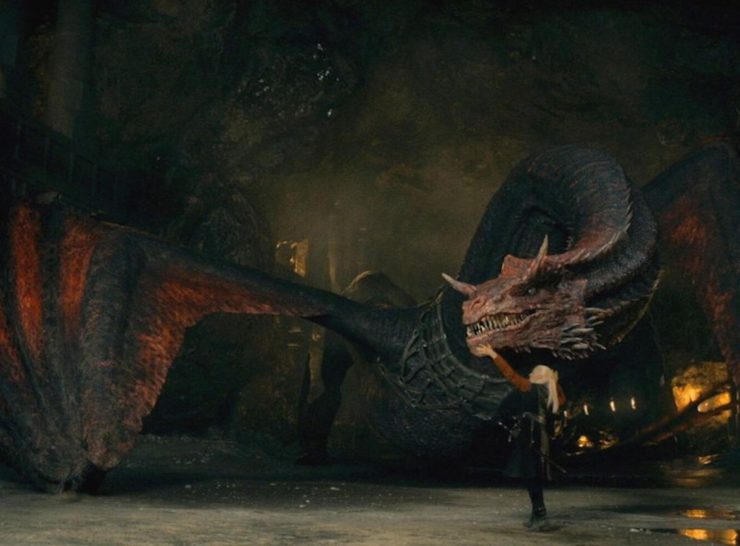
Dany’s dragons as shown on the screen are beautiful things. They’re not the dragons I’m used to seeing in Western lore, four-legged with wings, or Eastern likewise, also four-legged but seldom if ever winged. They’re pterosaur-like with powerful hindlegs, and forelimbs attached to broad leathery wings. Their bodies are covered in spines, with room enough at the base of the neck to permit a human to ride. They come in different colors, but the basic form is consistent; I suppose because they’re all from the same parent.
They start off tiny, cat-sized, but grow into massive creatures, with heads bigger than Dany’s whole (admittedly petite) body. They’re magnificent, even terrifying, in flight. On the ground they’re huge, and their eyes are remarkably expressive. And of course, they breathe fire.
Fire is what these dragons are all about. The Targaryen slogan is Fire and Blood. They exist to blast hell out of anybody the Targaryens don’t like.
And yet ironically, the reason why there are Targaryens in Westeros is because they once lived in Old Valyria, where legend says everybody had dragons and there were enormous numbers of them, but then a volcano erupted and took them all out except a tiny handful. Targaryens and Velaryons escaped with these to Westeros, and conquered the Seven Kingdoms. Dragons were nearly wiped out by fire, even while they went on to conquer Westeros with fire. It’s revenge of a sort, I suppose.
The timeline we’re given—less than 200 years before Game of Thrones, and a little over 100 after Aegon’s conquest—is really condensed compared to a supposedly 10,000-year history. But then we’re told that dragons in Westeros went through an entire devolutionary cycle from ginormous to cat-sized over a period of under 150 years. The reason for it, according to Tyrion who likes to hold forth about things he knows or thinks he knows, was poor husbandry and lack of sufficient habitat and hunting range.
(No spoilers for the new series past the first season, please. I’m operating here on what I’ve seen on screen.)
Buy the Book
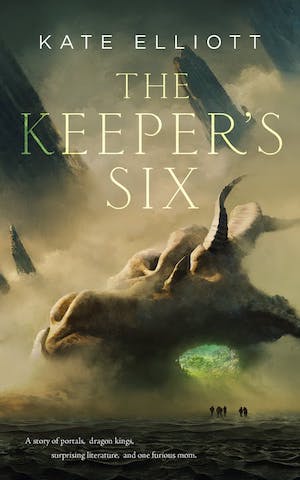

The Keeper’s Six
Having seen the original series, including the dragon-skull collection underneath the Red Keep, I was quite interested to see what the new series would show of the dragons’ heyday. Mature dragons in King Viserys’ day are big. Really big. We see little ones, and there’s evidently an active breeding program.
A baby Targaryen gets to share their cradle with an egg. Apparently it’s tradition. If the egg hatches, baby has a dragon buddy. If it doesn’t, baby may grow up and carry the egg around and keep hoping it will hatch. Or if that fails, Targaryen kid either learns Old High Valyrian and uses it to try to command (Impress?) a baby dragon in the dragon pits at King’s Landing, or manages to find an adult dragon that has lost its rider, and convinces it to take on a new rider.
In spite of the apparent plenitude of eggs, adult dragons are not exactly numerous. Press for the show tells us we’ll see 17. So far, eight episodes in, we’ve been told about Aegon I’s monster dragon, Balerion the Black Dread, who is now a skull in the throne room, though the current king, Viserys, rode him back in the day. Daemon has a big, squiggly, long-backed red dragon, and Rhaenyra has a smaller, lighter, prettier girl dragon. A few others show up, but those two are the main players in the first few episodes.
We definitely haven’t seen them all yet. The most poignant so far is the humongous Vhagar who belongs to Daemon’s Velaryon wife. Vhagar has to do the unthinkable, help her commit suicide by dragon fire (no fireproof Dany-ancestors here). And then, while the dragon mourns her fallen rider, an enterprising Targaryen tween succeeds in becoming her next rider.
I salute the special-effects team here as elsewhere (and in the original series, too). They manage to convey a notable amount of emotion through subtle movements and eye expressions. The dragons clearly have feelings, and equally clearly have thoughts and make choices.
Is there magic in Targaryens? Or is it in the language they use to control the dragons? In Dany’s case it’s pretty straightforward impression. Dragon babies hatch, see Dany as their mother. She controls them because she’s mom.
It seems to me, from what glimpses I get of dragon husbandry in the prequel, that she has to wing it for pretty much everything. She has a set of commands and the language to speak them in, but they’re essentially free-range until adolescent rebellion leads Drogon, the largest of the three, to become a menace to the local flocks and their shepherds. Drogon takes off and doesn’t come back, and Dany locks the others up in the dungeons in Meereen, causing them serious trauma. Eventually Drogon comes back and his siblings get to fly free again. They all seem to be mature enough by that point not to rebel against their mother.
Dragons in the prequel are pretty thoroughly under their riders’ control. There haven’t been any rebels so far. Maybe there will be later; we’ll see. We’ll also see how many of the younger generation end up with dragons. We have seen what happens to a dragonless Targaryen kid, the mockery and bullying they have to endure, and some sense that an older dragon will pass down from deceased parent to child—unless someone else gets there first.
I’ll keep watching the prequel for the dragons, in among the gore and the politics. I’d like to see more of how they’re kept, how they’re bred, and are all the eggs laid at Dragonstone or are there other places, too? Maybe we’ll get more insight into how dragons think. I’d like that a lot.
Judith Tarr is a lifelong horse person. She supports her habit by writing works of fantasy and science fiction as well as historical novels, many of which have been published as ebooks. She’s written a primer for writers who want to write about horses: Writing Horses: The Fine Art of Getting It Right. She lives near Tucson, Arizona with a herd of Lipizzans, a clowder of cats, and a blue-eyed dog.










